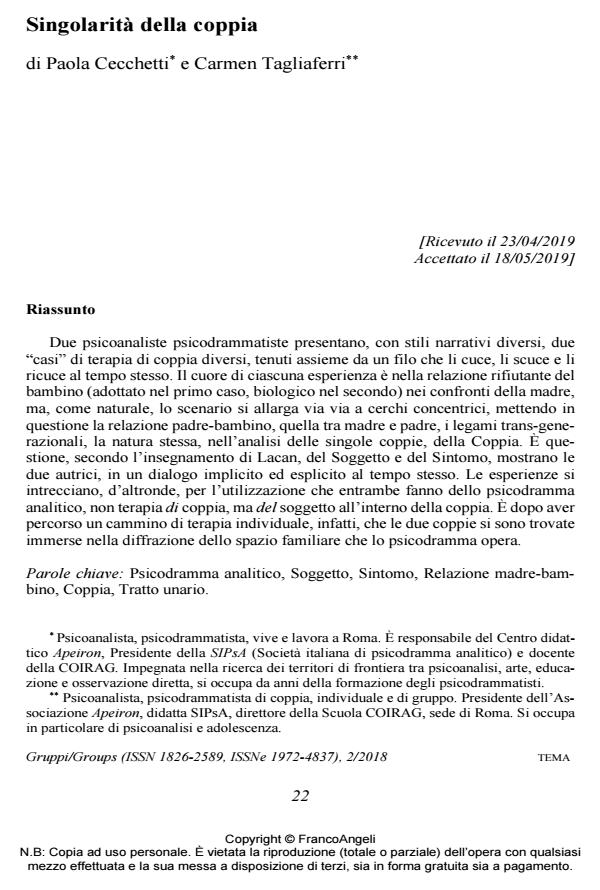Singularity of the Couple
Journal title GRUPPI
Author/s Paola Cecchetti, Carmen Tagliaferri
Publishing Year 2019 Issue 2018/2
Language Italian Pages 22 P. 22-43 File size 226 KB
DOI 10.3280/GRU2018-002004
DOI is like a bar code for intellectual property: to have more infomation
click here
Below, you can see the article first page
If you want to buy this article in PDF format, you can do it, following the instructions to buy download credits

FrancoAngeli is member of Publishers International Linking Association, Inc (PILA), a not-for-profit association which run the CrossRef service enabling links to and from online scholarly content.
Two different "case studies" in couples therapy are presented by two psycho-analysts-psychodramatists employing different narrative styles. The two cases are held together by a thread that binds, unbinds and binds them together again. The heart of each experience is the rejecting attitude of the child (adopted in the first case, biological in the second one) towards the mother, but obviously, the sce-nario gradually widens into concentric circles, questioning the father-child relation-ship, the relationship between mother and father, transgenerational bonds, the very nature of the couple. According to the teachings of Lacan, it is a question of Subject and Symptom in a dialogue which is implicit and explicit at the same time. The reported experiences are intertwined, as in both cases psychoanalytic psycho-drama is used, not as a therapy of the couple, but as a therapy of the subject with-in the couple. In fact, after following individual treatment, the two couples find themselves immersed in the diffraction of the family space produced by psycho-drama.
Keywords: Analytical psychodrama, Subject, Symptom, Mother-child relation-ship, Couple, Unary trait.
Paola Cecchetti, Carmen Tagliaferri, Singolarità della coppia in "GRUPPI" 2/2018, pp 22-43, DOI: 10.3280/GRU2018-002004